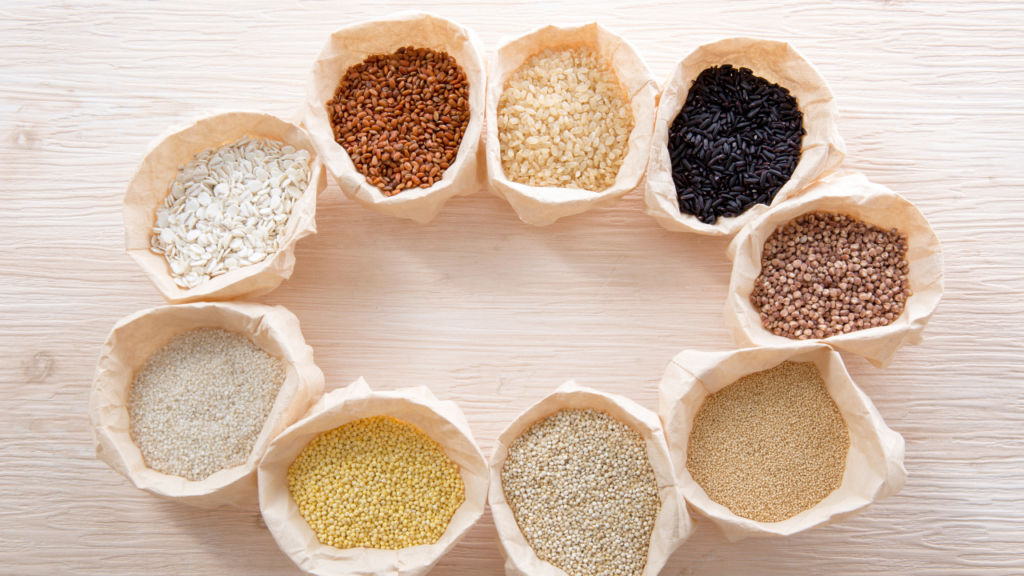Ayushi Baloni & Debaranjan Pujahari
Millets in India are undergoing a renaissance, and there is a strategic shift towards maximising their potential as the ‘crops of the future’. Research has highlighted that millets contain significant nutritional value, with up to 8% protein and up to 20% dietary fibre, averaging higher than wheat and rice. Beyond the health benefits, however, millet cultivation is also less resource-intensive, farmer-friendly, and climate-resilient. Therefore, this crop has the potential to combat climate change as well as sustain the nutritional status of the population.
Governments at state levels have been attempting to gradually revitalise the supply and demand of millets in India since 2012. Today, under the National Food Security Mission, the government of India has allocated about Rs 700 crore between 2018 and 2020 towards the promotion of millets. Furthermore, more than 500 startups have officially been promoted by the central government, with the Indian In
Parallel to government efforts, even private players have started venturing into this space. Food brands like ITC, Nestle, TATA Soulfull, and MTR Foods, among others, have launched specific food products made from millets. Small-scale, locally based startups like Slurrp Farm and Millet AMMA, among many others, have also been working with many local stakeholders to millets for over a decade.
However, this revival needs a systemic approach to enable greater scale. During 1965–1970, millets were 20% of the total food grain basket of India; now they constitute only 4% of the staple diet and consumption is dominated by rice and wheat. Moreover, the area in India under millet cultivation decreased by 56% during and after the green revolution, making these grains an almost forgotten part of of India’s production as well as food basket.
The Way Forward: One Size Will Not Fit All
Millets as a crop are divided into approximately nine categories, with more than 150 varieties grown at regional and local levels across the Indian landscape. However, we are seeing only three main varieties, namely, pearl (bajra), sorghum (jowar), and finger (ragi) millets, which are often clubbed together as the “major millets”, and dominate more than 90% of India’s millet production today.
There are several other lesser-known varieties of millets grown in some smaller pockets across the country, which mostly fall under the “minor millets” category. Some of these varieties are starting to see interest due to their specific nutritional properties, like foxtail (kangni) and barnyard (jhangora) amongst others.
The challenging part of mainstreaming millets is that the production and consumption trends for millets are highly dependent on geographical variances, consumer preferences, and the specific processing and value addition required to make them easy to consume and digest.
With growing support from both the public and private sectors in India, in order to truly achieve scale with a wider variety of millets, several aspects need to be addressed, including enabling scalable and consistent supply, value chain innovation, and reviving consumer demand. These will need to be addressed at the millet-level to propel the overall production of millets in India.
Enabling Supply
Prioritising rainfed regions of India for the production of quality seeds.
Since a long time ago, Rajasthan, Uttar Pradesh, and Haryana have been dominating millet production. However, the top 10 states also include Gujarat, Madhya Pradesh, Maharashtra, Karnataka, Tamil Nadu, Andhra Pradesh, and Telangana. Together, they contribute to nearly 100% of millet production in India. All these states have also been reported to have unsustainable levels of groundwater, and the Revitalising Rainfed Agriculture Network has been established solely to give priority to these critical rainfed regions of the country. Though millets are hardy crops that can deal with harsh conditions and less resources, making these states a high priority for stabilising groundwater and securing them as critical production potential centres for various millet categories will secure the the supply.
Moreover, to enhance the nutritional quantity of the seeds themselves and provide better-quality seeds to farmers, scaling up potential strategies like biofortification would be useful. In this way, millets can not only solve absolute hunger but also play a much-needed role in combating nutritional insecurity across the country.
There is a need to invest in establishing available and easily accessible seed chains for farmers, along with proper incentives and awareness, to increase the area and productivity of millets in traditional millet-growing regions.
Enabling Innovation
Investing in understanding and innovating local millet value chains.
Currently, there is a lack of data and large-scale, evidence-based research aimed at understanding millet value chains, especially at a production level. To enable a strong remunerative case for the farmers as well as sustain an affordable range of products for the consumers, it is imperative to study the value chains of various millets. Based on geography, the nature of the millet variety grown, and the additional efforts in value addition required to make it accessible to consumers, nearly 5% of the total monetary losses associated with harvest and post harvest losses of cereals in India are contributed by millets. The use of better threshing machines for minor millets can reduce up to 10% of the total waste generated.
Processing facilities for millets have to be a core focus to ensure that crop wastage is minimised and an optimal premium is transferred to the farmers, who are also dependent on the specific variety of millets that are produced. For example, the major millets do not require de-husking and only require basic cleaning and grading equipment. On the other hand, minor millets have a harder exterior coating and require specific processing technologies to keep their nutritional value intact while making them edible and easy to digest for consumption.
Investments in specific primary processing infrastructure and capacity building at the farm level as well as proper value-added infrastructure in the subsequent stages of the value chain can make millet supply chains more productive and remunerative.
Enabling Demand
Leveraging the Indian urban consumer’s shifting preferences towards health.
The knowledge of and production of millets are not new to India. Local communities in various parts have been growing indigenous and traditional varieties of millets since ancient times, and these grains have been identified by various colloquial names across geographies. However, post-green revolution, the consumer has almost forgotten the taste and relevance of millets as a must-have part of the Indian diet, with a strict skew towards wheat, and rice. These forgotten grains have thus been relegated to being a part of the ‘poor man’s’ diet over the last few decades in India.
However, now focusing these grains on the modern, health-conscious consumer seems to be the key to unlocking their value. India accounts for the second-highest number of diabetic patients, especially in urban areas, which is nearly 18% of the global count of diabetic patients. This is a visible health risk for the younger demographic. Indian urban consumers today are willing to pay almost 10% more more in premiums to buy health and nutrition-focused products, which is where millets can serve a significant consumer base. Millets are known to increase insulin sensitivity and lower the level of triglycerides and can act as a healthier substitute for the consumption of cereals (rice and wheat).
There is also significant value in exploring export opportunities in light of consumer demand. While India is the largest producer of millets today, it is only exporting 1–2% of the produce it generates to a growing global market, which has the potential to yield a CAGR of nearly 4–5% within the coming decade.
To revive the demand and value of this forgotten grain, millets need to be positioned as an aspirational product in the market, and learnings from products like quinoa can be leveraged. Differentiated product positioning for various target segments is essential based on the selective reception and understanding of millets across various target segments across India. Pushing the hospitality industry and food brands to promote innovative recipes is a key step.
With India’s Prime Minister, Narendra Modi, announcing that millets will be known as ‘Sri Anna’ across the country and India having spearheaded the proposal to designate 2023 as the “International Year of Millets” by the United Nations, it is clear that the central government wants to mainstream millet consumption across the country and leverage India’s burgeoning agriculture potential to be the potential to be the millet hub of the world.
This vision is progressing towards reality, but it requires certain key drivers to enable the right scale and usher in the age of millets not only in India but globally. This scale-up approach cannot be limited to a few varieties of millets but must look to encompass as many as possible to truly promote these almost forgotten grains. By shifting how supply is created, opening up new possibilities with innovation, and responding to growing demand, the potential to revive millets and their benefits for future generations is promising.
Source: BQ Prime




